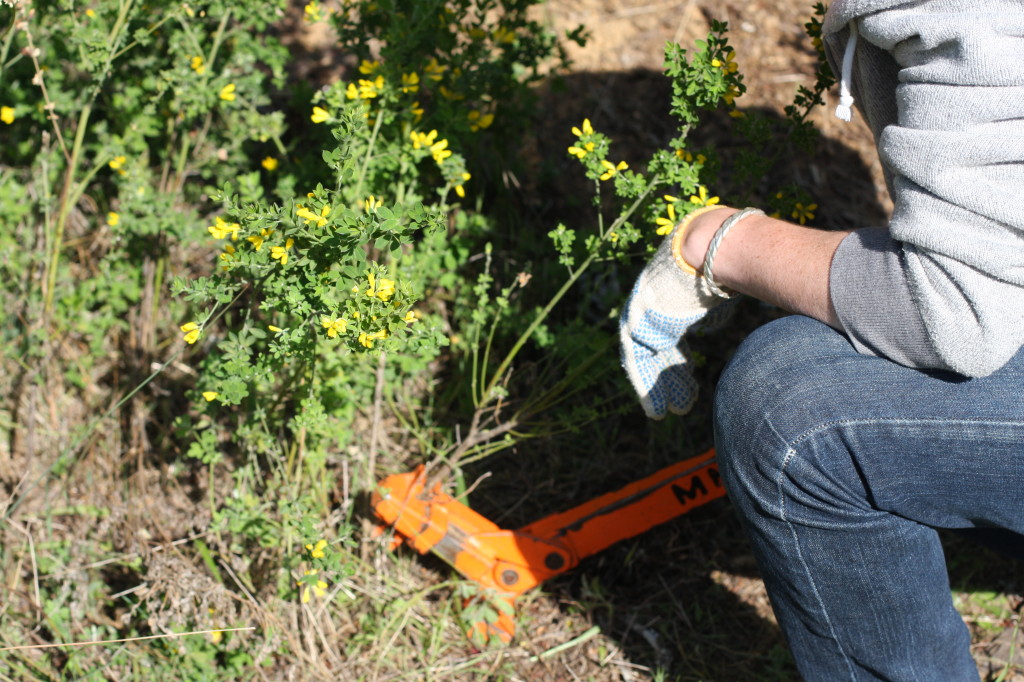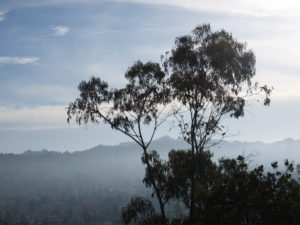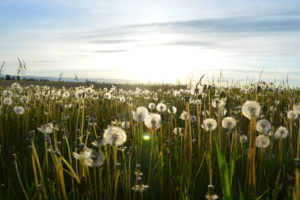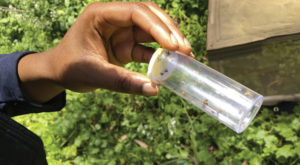Suzanne Whelan stands in front of a thick patch of French broom and addresses a group of 17 volunteers who traded in last Saturday to help remove this invasive plant from the Mt. Tamalpais watershed.
She cautions them about the hazards of the job: ticks, poison oak, sunburn, uneven terrain, bees and general exhaustion from the heat. Pulling weeds is not glamorous or easy work. And yet, volunteers put in about 3,000 hours on Marin Municipal Water District (MMWD) land during the 2012-2013 fiscal year in habitat restoration, much of it involving removing the “No.1 weed in Marin County.”
One of the volunteers tells Whelan that the effort is “analogous to reclaiming the Sahara with [her] watering can.”
She laughs: “What are you going to do? Whatever you can.”
That might as well be the motto for Earth Day 2014. As we reflect on the compounding problems facing the planet, as individuals it may seem like the best we can do is keep pulling the weeds we see in our own backyards, however intractable they might be.
In the case of French broom, a woody perennial shrub that comes dressed up in attractive yellow flowers, removal has been a focus of native plant restoration efforts for many years around the Bay Area. Genista monspessulana has taken over an estimated 100,000 acres in California since its mid 19th Century introduction as an ornamental, growing at a rate of more than two feet per growing a season.
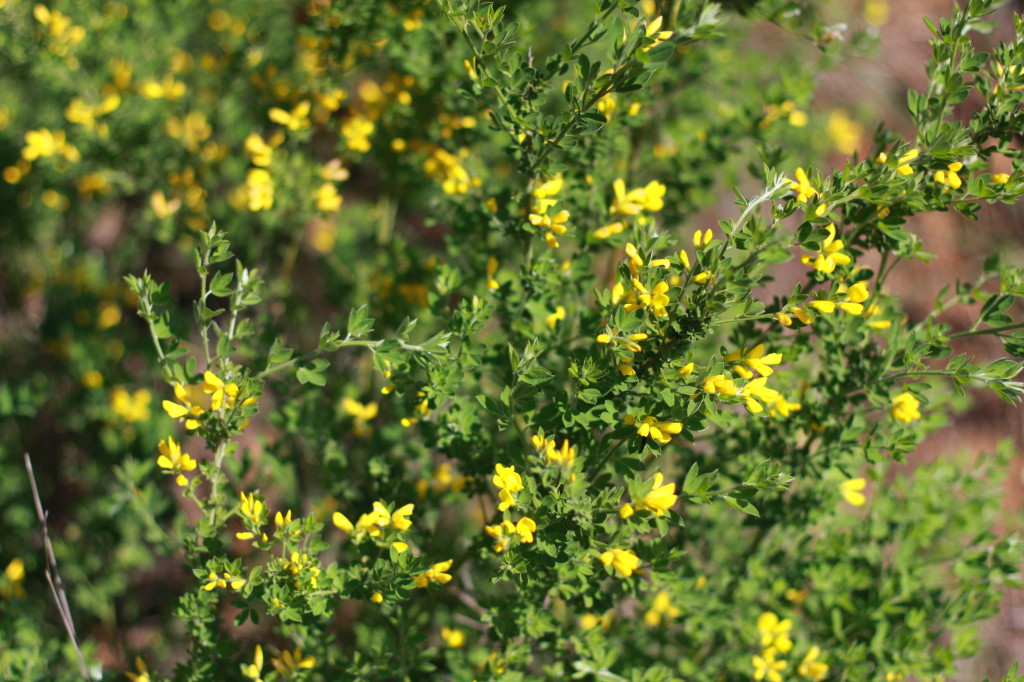
For the past 12 years, the Marin water district has been working against all odds to get rid of the thing. Volunteers have clocked 7,000 hours in the last year alone, and the broom is still spreading at a rate of 50 acres a year. It covers 1,400 acres of watershed.
“We’re making progress in strategic areas — we are not winning,” says Whelan. “It is expanding faster than we can remove it.”
The volunteers range from middle-school age to almost 70. Suzanne reaches down and pulls all the way to the root. She explains that it’s important to get the whole root out because if you break it, the plant just grows back more aggressively, and with multiple stems. Volunteers are given orange weed wrenches to remove the pieces that won’t come out by hand.
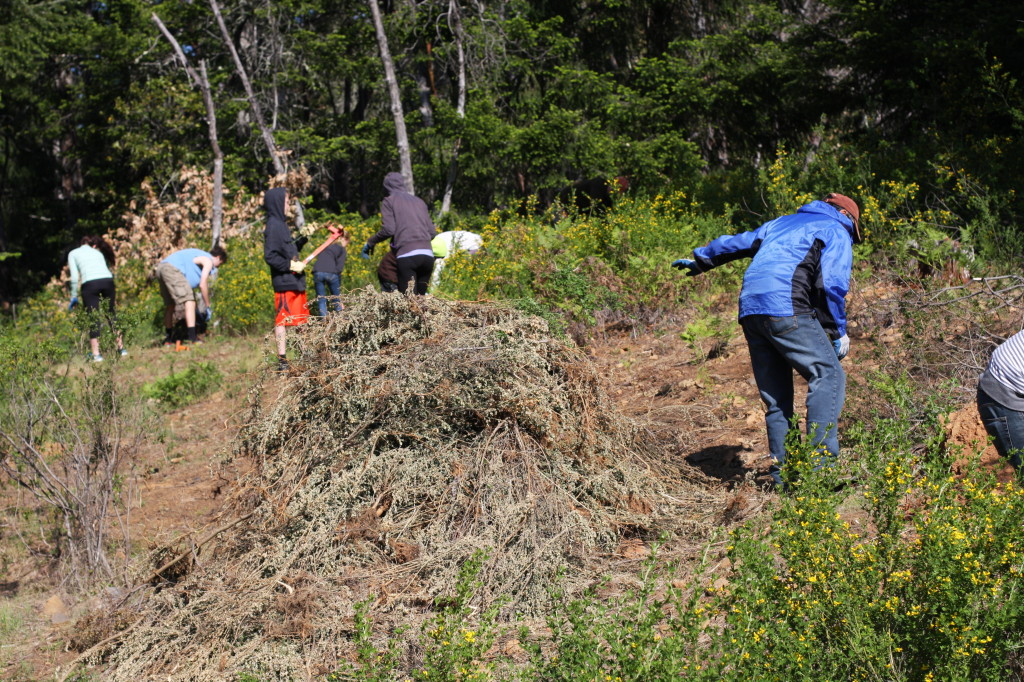
The work is being conducted at Pine Point, 9 acres of which is infested with French broom. The Marin water district mowed the area for decades, but has been hand-pulling since 2010, and Suzanne expects they will need to continue for another six to seven years to be effective. She says you need to, “pull, pull, pull for a dozen years,” to make an impact.
The Marin water district manages almost 19,000 acres of Mt. Tamalpais’ watershed. These lands are part of the UNESCO Golden Gate Biosphere Reserve, an internationally recognized biodiversity hotspot. The watershed boasts 900 vascular plant species, 400 vertebrate animal species, and many species of fungi and invertebrates, including about 50 plants of special significance. That diversity combined with 150 miles of road and trails to hike, bike or ride horses, provides recreational opportunities for about 2 million visitors a year.
Whelan says it isn’t difficult to find volunteers.
“People want to come up here, they want to come out,” she says. “Locals have a great sense of ownership of Mt. Tamalpais.”
She believes that the people who come out to volunteer, “have a connection to place and understand the connections between a healthy environment, a healthy water supply and a healthy community.”
French broom is known as an ecosystem disruptor because it changes the cycling of nutrients, fire and water. It also changes the habitat structure’s value for both animals and plants.
Whelan says that while walking the trails at the end of summer, “you can actually hear the seeds pods pop open and the seeds explode out and sprinkle into the landscape.” These seeds can persist in the soil for 50 years, creating a formidable seed bank for the species’ long term survival.

The broom replaces the mostly low-growing native ground-cover, Whelan explains. If fire came through the area with only native species, it would act to re-generate the soil. However, broom can grow into a tall shrub — she has seen it as high as about 15 feet. These taller shrubs create “ladder fuel” which allows the fire to jump into the canopy, creating a very dangerous burn.
“It’s an aggressive weed,” Whelan says, explaining that it grows in dense aggregations, creating barriers for human recreation and plant growth. Native animals seem to have no use for it. Suzanne says she’s only seen bees and moths on the plant, and nothing else seems to eat or live in it. Ecologically it is almost equivalent to a barren area.
In return for a few hours of weed-pulling, the volunteers get a little exercise, sunshine, and a free parking pass to enjoy the watershed for the day. Despite the hardships and seemingly little progress or reward, the love for this place and determination seems apparent. Happy Earth Day 2014!
Help out:
Habitat restoration activities take place on the third Saturday of each month from 9:00 am to 12:00 pm.
For more Earth Week restoration activities and opportunities to volunteer, visit Bay Nature’s events calendar!
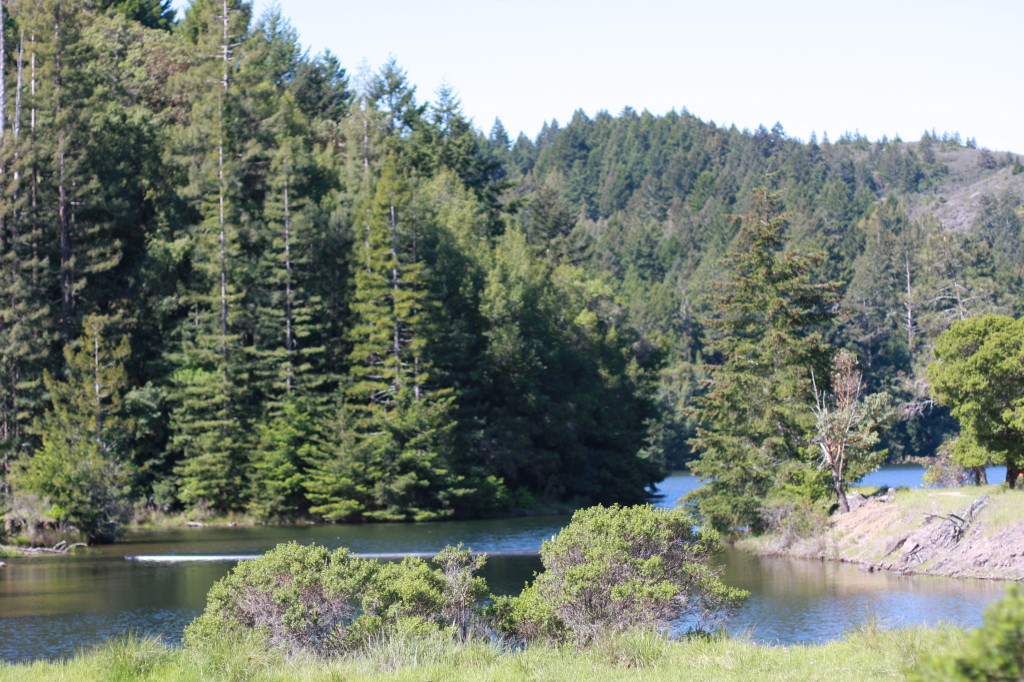
Autumn Sartian is a Bay Nature editorial intern.

